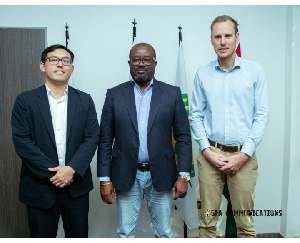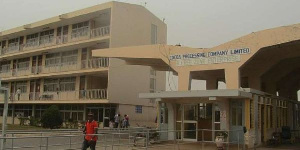Opinions of Friday, 30 November 2018
Columnist: Abdul-Jaleel Hussein
Africa is our home, We drive her growth
“No two countries are the same. Every country in Africa has a different culture, a different economy, a different way of doing things.” – Extract from Chinua Achebe Anthills of the Savannah.
Within the development agenda, the agricultural sector plays a critical role in the process of economic development.
But more fundamentally, nothing is more important to humanity and the stability of societies than a reliable and affordable supply of food.
Increasing global food supply to accommodate a world growing to 10 billion or more people, however, remains one of the critical challenges of the 21st century.
The world’s population is expected to hit 9.3 billion by 2050 automatically increasing global food demand by 70 per cent. As unfamiliar as this counter-narrative may sound, Africa, with the right investments, holds the key to achieving a ‘zero-hunger’ target despite escalating population growth and adverse effects of climate change.
Now, let us throw in some facts that bear this claim out. Africa has around 60% of the world’s uncultivated arable land. Also, the continent has 733 mn Ha of arable land, accounting for 27.4% of the world total, compared to 570 mn Ha in Latin America and 628 mn Ha in Asia.
However, only 3.8% of Africa’s surface and groundwater is harnessed, while only 7% of cropland is irrigated, of which 3.6% is located in Sub-Saharan Africa (SSA). Clearly, African agriculture has considerable capacity for growth.
SSA, what we refer to as the ‘region of opportunity, experiences the greatest differences between potential and realized yields for several crops, particularly maize and rice. Humid areas appear to report the largest gaps and arid areas the smallest.
Also, yield improvements for various cereals have been hampered by low technology adoption; poor rural infrastructure development, particularly roads and irrigation; high fertilizer prices; and various climatic and demographic factors. However, the yield gap for most crops could be reduced by appropriate use of improved crop varieties; recommended application levels for appropriate fertilizers; and adequate management of nutrients, water, pests, and diseases.
Africa has the potential to create a trillion-dollar agriculture sector if supported with improved agricultural cultivation and livestock practices, higher quality, more precise inputs, selective expansion to high-quality agricultural land, and imports.
The value of African agricultural output is forecast to increase from USD 313 bn currently to USD 1 tn by 2030, offering significant potential for investments in the sector.
And how do we know this?
The Standard Bank Group, the parent organisation of Stanbic Bank Ghana, understands this. With an established presence in 20 African countries, the Bank not only know the dynamics of each local market, its specialist sectors and its communities; we are also committed to every one of them.
So when it comes to doing business in Africa, investors know they are dealing with the bank that truly celebrates unity in diversity. We offer a common point of coordination for deals and opportunities which acts as a trusted facilitator and co-coordinator through linking opportunities across geographies between Relationship Managers.
Abdul-Jaleel Hussein Head, Commercial Banking Stanbic Bank, Ghana
Entertainment










